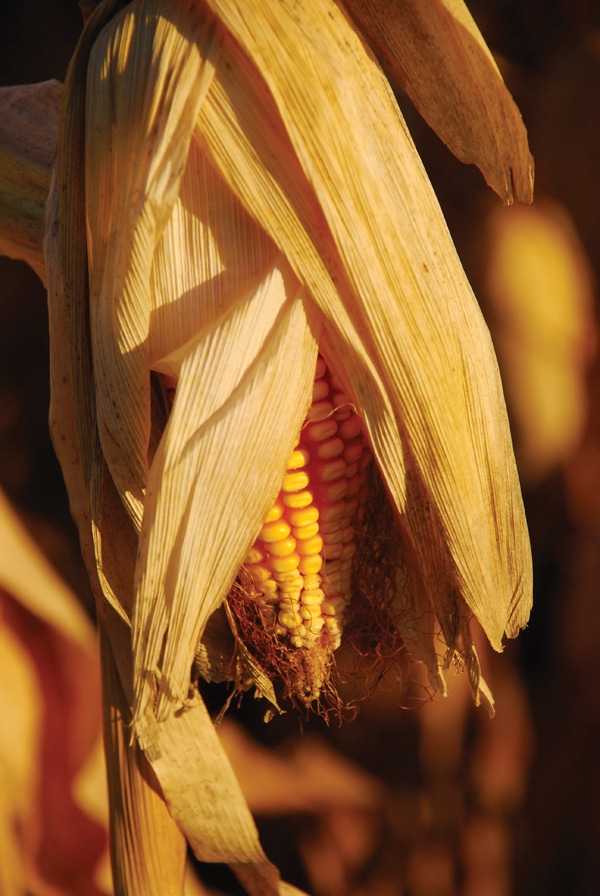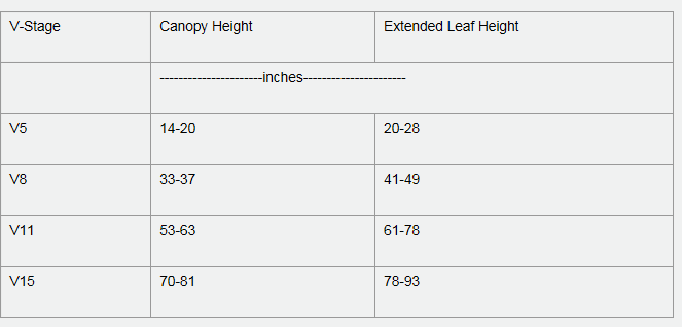June 28, 2017

By Peter Thomison, Ohio State University
During the past two weeks, corn has “exploded” in growth in many Ohio fields. Under favorable growing conditions corn plants can grow nearly three inches per day between V8 (i.e., the eight leaf collar stage) and V15. However, there is considerable variability in corn development across the state, between neighboring fields, and within fields. Most of this variation can be attributed to planting date differences. Corn planted in mid to late April is at or beyond V13 whereas corn planted in early to mid-June is usually at stages no later than V3-4. Variation in growth and development is also related to differences in rainfall accumulation. Within fields, corn subject to ponding and prolonged anaerobic conditions often appears chlorotic and stunted and may be one to three leaf collar stages behind corn growing nearby under more favorable drainage conditions. Keep in mind that canopy and plant height can be quite variable at any given collar stage (Table 1).
What impact will these varying environmental conditions have on kernel numbers and ultimately grain yield? As early as the V5 or V6 stage, the tassel and the uppermost (harvestable) ear are initiated (Nielsen, 2007 and Abendroth et al., 2011). Kernel row numbers per ear may be established as early as V8. Kernel row numbers are usually affected less by environmental conditions than by genetic background. Corn hybrids characterized by "girthy" ears exhibit more kernel rows (about 18 or 20 rows) than hybrids with long tapering ears (about 14 or 16 rows). Determination of kernels per row (ear length) is usually complete by V15 stage and maybe as early as V12 (Nielsen, 2007).
Unlike kernel rows per ear, kernels per row can be strongly influenced by environmental conditions. Kernels per row (ear length) can be adversely impacted by stress (often drought) in the two weeks prior to pollination. Many of our late planted corn fields experiencing excess soil moisture have not yet reached these critical stages. For most of these fields, loss of kernels per row on developing ears may be minimal and impact on potential yield limited. However, if N losses associated with ponding are substantial they may result in N deficiencies that can lead to kernel abortion during early grainfill stages and premature plant senescence.
Canopy height and extended leaf height at different V-stages, S. Charleston, OH, 2007-2009.

References
Abendroth, L.J., R.W. Elmore, M.J. Boyer, and S.K. Marlay. 2011. Corn growth and development. Iowa State Univ. Ext. PMR 1009.
Nielsen, R.L. 2007. Ear Size Determination in Corn. Corny News Network, Purdue Univ. [online] http://www.kingcorn.org/news/timeless/EarSize.html.
You May Also Like




